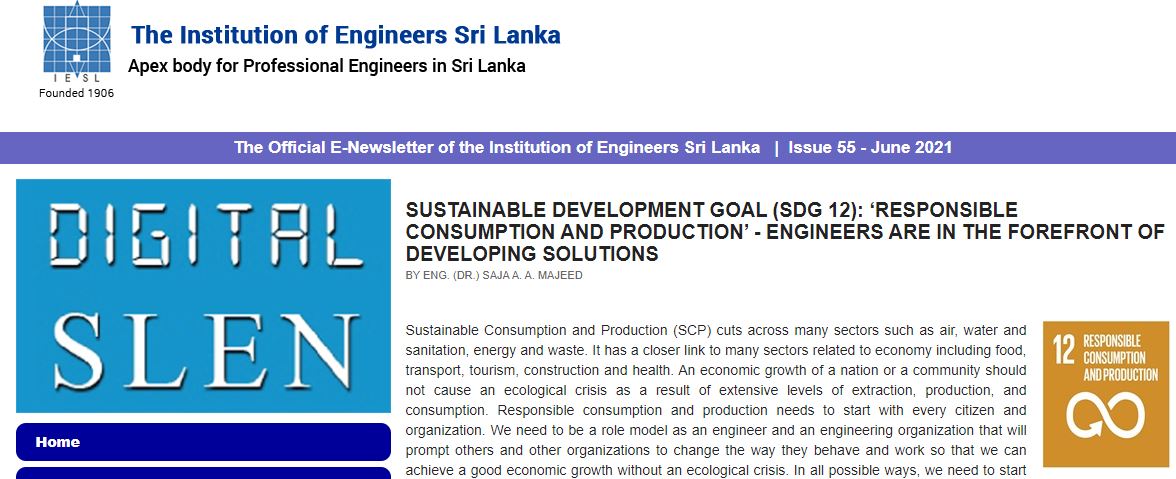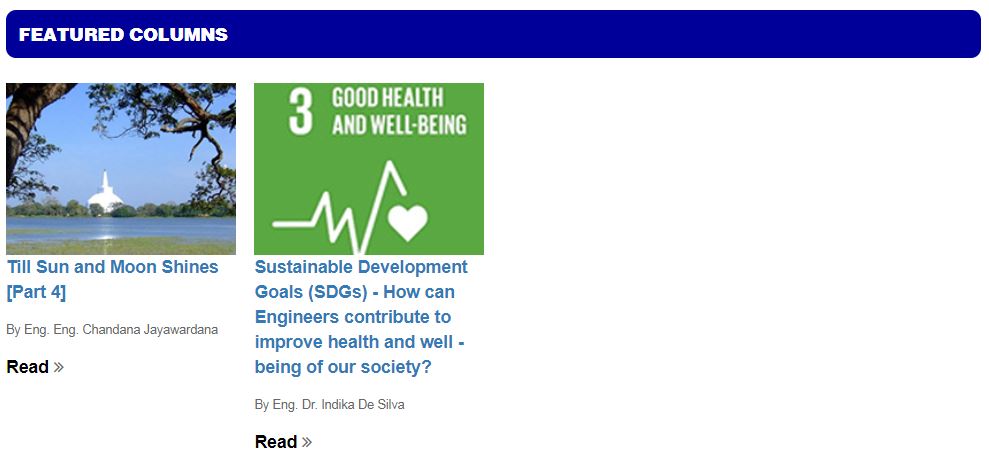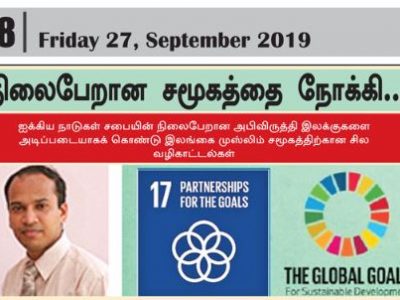Promoting Sustainable Development – How should We Develop Human Resources and Institutions
Sustainable development is one of the existing mechanisms for channeling development assistance throughout the developing world. However, as a process, sustainable development can be applied to different socio-economic contexts, often as a tool to revitalize democratic governance and participation. In general, sustainable development can be defined as “Development that meets the needs of the present without compromising the ability of future generations to meet their own needs.” Gro Harlem Brundtland (The Brundtland Report: Our Common Future, World Commission on Environment and Development)
Sustainable Development
Generally sustainable development focuses on mainly the outcomes. This focus on Outcomes refers to focus on positive outcomes for communities relating to health, wellbeing, food security, education and skills, gender equality, empowerment, livelihoods and other aspects of the human life.
Sustainability – Support sustainable livelihoods and development within environmental limits, and without disadvantage to future generations or unacceptable degradation of a community’s supporting environment with the social justice which meet the needs of all, regardless of race, creed, nationality or gender.
The Nature and Process of Delivery of sustainability can be discussed as follows which are the mechanisms for human resource development and institutional capacity building thus contributing to wider picture of sustainable development.
- Capability Building in People – It is not possible to achieve without engaging with and developing the skills, talents and knowledge of all sectors of society, including young people, women, end-users and providers.
- Capability Building in Society – should support the development of local capability in governance, the skills base and in commerce.
- Appropriate Standards and Resources – It should be designed, delivered and maintained using participatory approaches and appropriate standards. Where possible it should employ local labour, and make use of sustainable local resources.
- Planning, Procurement and Delivery – This planning should be pro-active and support sustainable livelihoods and should be delivered using appropriate partnerships and appropriate contracts, with inbuilt pro-poor and social goals.
Over the last decade or so there has been increasing public, professional and political interest in international development and poverty reduction, fuelled by the Rio and Johannesburg Sustainable Development. The establishment of the Millennium Project, which set out the eight Millennium Development Goals (MDGs) as measures which progress in development could be made. Alongside the growth in public concern and interest, many actors had a wish to contribute something of value to the development process. It is not necessary to say that the nucleus of the sustainable development is people. Hence it becomes necessary for ever than before to focus not only on the development of human resources but on the institutions where there is reliable system in place for self sustained in the community it self.
For example: Any demand-driven/community-defined project that meets certain set of community needs some times refers to Micro-Projects. This expresses the demand of the majority of community members while ensuring representation of a cross-section of the population including all ages, social/economic status, and gender. The project must be considered as a priority by the community and must include a large number of beneficiaries/participants. Through full participation and priorities defined by the communities sustainability will be ensured. Hence, as a guide for successful projects, a good Micro-Project must: Have a Large Base of Beneficiaries; Be Participatory; Be Sustainable; Be Affordable and Realistic; Have a Maintenance Plan; Incorporate Accountability; and be Cost Effective.
These all issues address the need of the skilled and unskilled labour force development, transforming the full authority to the community ensuring that the initiatives of the communities are sustainable.
Civil society Participation
There is no doubt that civil society participatory approaches to sustainable development over the past years has effectively demonstrated the capacity of the community to participate actively in their own development initiatives in south asian countries particularly in Sri Lanka, Bangladesh and India where the traditional values are given priority as opposed to the western development concepts. As for example in Sri Lanka, this has already been applied in several community development works and even though it has some setbacks, the impact evaluations showed that it was almost positive due to the fact that human suffering owing to the conflict brought more stress on people which resulted in setbacks in the development. So drawing from these experiences, several possible alternative mechanisms can be suggested to work this out effectively in terms of human development.
It also has become important than ever that the local people should be empowered in order to manage and sustain their development activities. This outlines the need of using the participatory, enabling ways of working that strengthen people’s resilience, self-reliance and self-determination so that people should feel that the activities around them are part and parcel of their life. The initiatives have already been launched in Sri Lanka which challenged the development workers because of the lack of understanding about the strengths within the community. This demonstrated the need to mobilize and capacitate the community to sustain its future.
Considering Sri Lanka as a developing country in Asia and Pacific region, its rural communities make up 70 per cent of the country’s population. Several organizations working to demonstrate sustainable micro level interventions in these rural communities. But in these work lot of challenges are being faced by the development agencies and worker as more focus is given in working in a relief oriented context. So there is a strong need has been realized over the past few years that working in partnership with the community based organizations concentrated on building the capacity of field level workers, training on and disseminating information based on our past experiences.
“Fostering sustainable development can be seen as a way of improving the social, economic and cultural well being of people living in our region”
Human resource development will establish a basis for designing new policies and starting new practices that will improve the efforts toward sustainable development. Twinning the scientific analysis with the local community knowledge will bring the fuller understanding of the system in which people live and work and this enhances the power of decision making. In this way the people feel the ownership and high value on their contribution to move the development activities sustainably.
Hence for example “Principles of Engineering for Development and Poverty Reduction“was launched in February 2005 by “Engineers without Frontiers” focussed on: Positive and sustainable outcomes, Nature and process of delivery, Funding, value and context. The following are established under the nature and process of delivery.
Develop the talents and knowledge of all – including young people, women, end-users and providers
Support development of local capacity in governance, skills, and local business
Employing where possible local labour, materials resources and methods
Should use appropriate partnerships and contracts and with in-built, social goals to alleviate poverty
Considering the above underlying principles, it is obvious that to achieve the positive and sustainable outcomes, the recognition of the capacity of the community including the youth, women and the human resource development aspects are top priorities on the list.
People with a job to do cannot do that job to satisfaction unless they have the right skills and tools. In today’s world of change – changes in the environment in which we live, changes in family life and community structure, changes in the economy and business world, changes in the government and policies – it is hard to keep up with the skills and tools needed to make a decent living and to live in harmony with our neighbours and our surroundings.
Hence one of the main thematic areas in promoting the sustainable development is to develop the human resources and institutions by means of helping governments and people in Asia and pacific gain the skills and tools they need to live and work sustainably in these region of the world. This involves many different things in the context of the Asian region. This equips national governments to govern with the interests of the people in mind, to share management with local communities, and to recognize the great variety of cultural traditions.
It informs the people about the social, political, cultural and economic events taking place around the world and shows how these events affect us and vice versa.
Developing human resources and institutions (Rather it can collectively be called as “capacity building”) places a high value on information which include gathering, interpreting and sharing it with the right users and finally turning it into action towards positive changes. Turning knowledge into action often requires new ways of thinking and doing things. The first step of any action towards a positive sustainable change is the need of reliable information. In order to make the reliable information available for further action, new skills are needed in several areas as described above such as collection, organization, and storage of information, analysis, assessment, research, and technology.
These areas can be further looked into the following three main thematic areas with regard to human resource and institutional development. They are;
- New communication skills – getting information our in an understandable way.
- New organizational, management and operational methods – To recognize and take full benefit of the community partnership as opposed to the top – down approach.
- New methods of education and training – helping to bring up people and organizations to speed on the skills needed to operate sustainably.
In Asia- Pacific region the human resource and institutional development can be discussed in the following specific categories and some recommendation can be drawn.
- Strengthening Primary and Secondary Education
With regard to primary and secondary education provide the basic skills of literacy, numeracy, communication and problem solving skills and develop the required attitudes which are necessary for the work. Strengthening primary and secondary education is a main challenge in human resource development in the developing countries of Asia and the Pacific.1Furthermore greater efforts should be made to improve the quality of relevance in secondary education. This already has been launched in Sri Lanka. However there is a need to improve the relationship between the academic and the real work as opposed to be too ideal which mainly focus on the hi technology. In fact, Technology has a role to play, but it needs to be used intelligently. New forms of water resource management technique and the land use planning for example need to be explained simply i.e. to be transformed which can be understood by the community itself. This gap is identified and addressed by the community development practitioners. Hence the efforts need to be taken sooner rather later and dialog should be stirred up between these two poles which possibly have a greater chance for better understanding to work together towards the unique goal in sustainable development.
The school curriculum should be revised to ensure that it not only caters for the academically less inclined but also prepares them for the world of work. It is absolutely pointless in addressing the issues which are not a need of the community and priorities identified (i.e. rather than an urgent need to be addressed, Here we try to define the priority as a solution to the root causes of the problems) within those needs.
- Expanding and improving the existing work force in the country
Training in the development sector should be linked to its strategic plan and be based on a training needs analysis of that sector. Hence practitioners have good understanding about the changes in the environment, new policy developments and other creative initiatives result in improvement in their competencies. However the challenge particularly in Asian countries is to change in the attitudes of worker who may resist to change due to several reasons including the own policy, biasness in several issues in certain context (Conflict, Party politics).
So the programs are needed to be developed to build the confidence and to recognize the problems associated with them.
- Research and Development
Decentralizing the research initiatives in different sectors and linking the gaps between research findings and real ground problems. This should be rectified by means of providing good guidance to the researchers in appropriate ways rather for the purpose of the self gain and performance with failing to address the real issues and solutions.
Therefore the need comes up with promoting the good practices and establishing strategies for proper monitoring and follow up actions to direct in a sustainable manner.
In brief, human resource and institutional development is to make sure that the individuals, communities, institutions, government and other stakeholders have the information, knowledge, skills and attitudes they needed to solve today’s problems, to build up on what they have further (By inquiring the strengths and appreciate to build on top of them) and to adapt to change in a way that leads to sustainable development results in healthy future generation.
Thus the human resources and institutional development contributes widely to sustainable development significantly rather directly. Hence focusing on the production capability has become more important than emphasizing on the ultimate production (In sustainable development terms production capability is more relevant which yields sustainable outcomes as opposed to ultimate products which may not be sustainable even though it is important in any action) which is the basic idea behind the sustainable development than ever before.
“When planning for one year,
there’s nothing better than planting grain,
When planning for ten years,
there’s nothing better than planting trees,
When planning for a lifetime,
there’s nothing better than planting men”.
The Chinese philosopher, Guanzi (551 – 479 BC)
References:
- Human Resource Development in Asia and The Pacific In the 21st Century – Issues and challenges for Employers and their organisations, 1996, Paper presented at the ILO Workshop on Employers’ Organizations in Asia-Pacific in the Twenty-First Century Turin, Italy, 5-13 May 1997.
- Capacity building overview of the arctic council, Arctic council Sustainable Development working group.
- Principles of Engineering for Development and Poverty Reduction, Engineers without Frontiers, February 2005.
- Millennium Development Goals, New York; United Nations, 2000.
- Poverty Reduction Partnership Agreement between the Government of Sri Lanka and the Asian Development Bank.
- Community Participatory Approaches – Tools and Techniques, RedR Training materials, (unpublished), 2006.
- Sustaining the future – Engineering civilization from the shadows, Professor Paul W Jowitt, Brunel lecturer, ICE, 2006.







